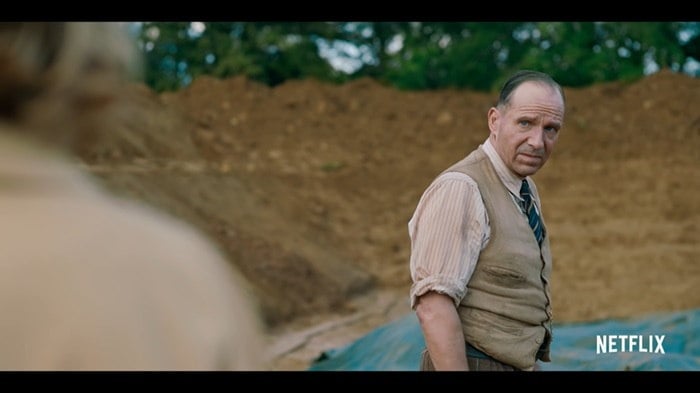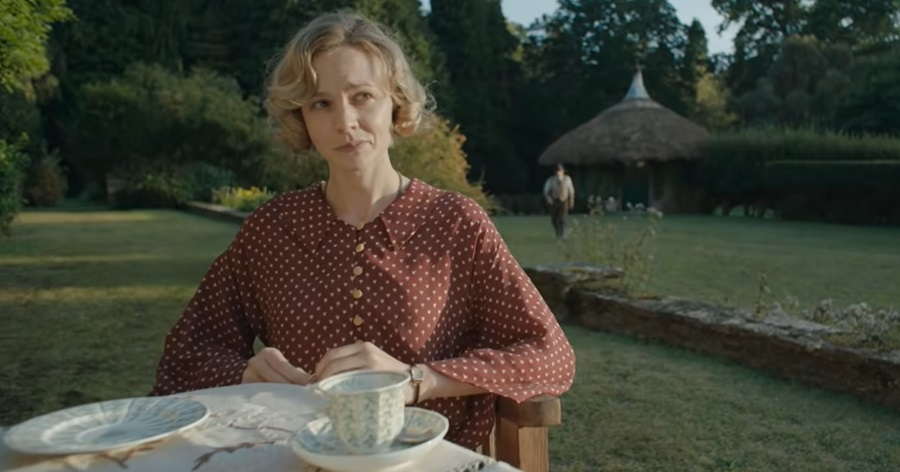In the ending of the movie, The Dig, the focus shifts to World War II and the unknown destinies of the central characters. The film recounts the true story of the excavation of the Sutton Hoo burial site in Suffolk, England, as documented in John Preston's 2007 novel of the same name. Although rooted in historical events, The Dig takes creative liberties by fictionalizing the characters to enhance the narrative's accessibility. This approach serves to emphasize the overarching themes of persistence and legacy in the storytelling.
Set against the backdrop of 1939, The Dig unfolds prior to Great Britain's entry into World War II. The narrative commences with Edith Pretty, a widow portrayed by Carey Mulligan, hiring the services of an amateur excavator named Basil Brown, played by Ralph Fiennes, to investigate potential discoveries beneath her property. The unearthing of a 6th-century Saxon ship prompts the involvement of professional archaeologists in this historic project. As the central excavation unfolds, revealing unexpected treasures and a burial site, the film weaves in various subplots that delve into the perspectives of each main character, exploring their futures against the backdrop of an escalating World War II.
The ending of The Dig takes a spiritual turn, with Edith expressing concerns about her health and her son's fate. A profound friendship develops between Edith and Basil, leading to philosophical conversations about life's meaning and the legacies left behind. The narrative delves into the concept of fate, particularly through a romantic subplot involving Edith's cousin Rory Lomax and Peggy Piggott, a married excavator portrayed by Lily James. The story reaches its resolution with the discovery of a valuable treasure donated to the British Museum, Rory's departure for wartime service, and Peggy's separation from her husband Stuart. The film concludes with the characters continuing their lives, and the epilogue notes Edith's passing and the eventual recognition of Basil's archaeological contributions. The ending reflects the intentions of screenwriter Moira Buffini and director Simon Stone to convey the multifaceted aspects of the characters' lives and the lasting impact of their experiences.
Peggy & Rory’s Romance
Although Peggy and Rory's romantic storyline in The Dig is entirely fictional, its tragic undertones are likely to strike a chord with viewers. The characters, seemingly well-matched due to shared interests, are destined to be separated by two significant factors: marriage and the looming war. The film crafts Peggy as a sympathetic character, highlighting the emotional distance and lack of affection in her marriage to Stuart. This portrayal makes it easy for the audience to support a romantic connection between Peggy and Rory.
Just as the characters succumb to their feelings, the narrative takes a dramatic turn by revealing Rory's imminent departure for war. The swift departure resonates with the universal experience of families of soldiers or those who have unexpectedly lost loved ones. While there's a possibility of Rory returning unharmed, the film suggests a darker fate through its subtext. The story introduces an additional layer of tragedy as Edith hopes Rory will care for her son, Robert, expressing a fear that Rory might not survive the war. Overall, The Dig weaves a complex and emotionally resonant narrative around Peggy and Rory's romance, exploring the impact of external forces on personal relationships.
Robert Pretty as a Symbol of Hope & Fear During World War II
Although Robert Pretty may appear as a minor character in the movie, he serves as a symbolic representation of the collective hopes and fears experienced by various characters. The narrative uses the boy to encapsulate the emotions felt by many individuals during World War II, especially those who weren't directly involved in the conflict. Early in the story, Robert exudes a childlike sense of wonder, whether he's captivated by a movie or expressing fascination with the cosmos, influenced by the real-life background of Basil, who was an astronomer.
The film subtly weaves Robert's genuine curiosity about the mysteries of the universe, influenced by Basil's interests. In a poignant moment, the narrative takes a heartbreaking turn as Robert, in a role reversal, breaks down and expresses concern that he has failed to protect his mother from sickness. This scene underscores the profound impact of the looming war on innocence and familial dynamics.
By juxtaposing Robert's innocent fascination with moments of intense stress, The Dig transforms him into a symbolic figure representing the blend of love and fear, hope and terror that many experienced as World War II approached, ultimately losing their innocence in the face of the impending conflict.
The Meaning of the Ending of The Dig

In a pivotal moment towards the end of The Dig, the film delves into a profound exploration of deeper themes. Edith engages in a car conversation with Basil, expressing her concerns about the transient nature of life and the lack of enduring legacy. Her somber reflection becomes the catalyst for Basil to provide a poignant commentary on humanity, emphasizing our interconnectedness as part of something continuous.
The film employs a seamless transition, where Basil's spiritual dialogue overlays photographs of the Sutton Hoo archaeologists, cleverly revealed to be pictures captured by Rory. Subsequently, Peggy discovers images of herself involved in archaeological discoveries, highlighting the notion of shared and continuous legacies. The sequence underscores the idea of passing the torch from one generation to the next, ensuring a lasting impact and a sense of perpetuity.






